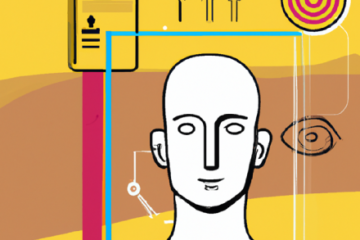What Does It Take to Run a Comprehensive CX Program for Your Business?
What Does It Take to Run a Comprehensive CX Program for Your Business?

Customer experience is keeping the customer at the centre of every decision that you take. It is the total of what someone perceives about your brand and the type of keywords they associate with you. But in 2022, this definition has evolved into meaning giving the customer’s voice its due and using that to make business decisions.
Metrics used in CX and why they’re used

Usually, these 3 metrics are used to measure CX:
- Net Promoter Score (NPS) asks the question would you recommend a brand to a friend or family member.
- Customer Satisfaction (CSAT) measures satisfaction at the end of a touchpoint interaction between a customer and a brand.
- Customer Effort Score (CES) asks the question how easy was it to solve a problem today.
These metrics are used because they’re easy to measure, provide actionable and real-time tips, are proven effective, and enable continuous improvement. Especially NPS and CES are easy to communicate across the organization and lead to ease of building linkages with score and business processes.
6 building blocks of creating a comprehensive CX program

Starting a CX program can be overwhelming especially when you consider all the organizational and operational changes this would entail if you want your program to be a success. Here are 6 building blocks to keep in mind while creating your CX program:
1. It should provide a holistic view of CX across touchpoints
Customers are finding you and engaging with you across touchpoints – whether digital or in-store. An understanding of how the different touchpoints have worked or not worked for your customer can help you to serve them better or make your processes more efficient.
For example, a leading private sector bank in India implemented an experience management process for a holistic view of their CX. They managed to:
- Engage with a customer base of 3.6 million.
- See a higher response rate.
- Reduce its turn around time from 37 hours to 4 hours.
- See a 36-point improvement in its NPS over 12 months.
- Share best CX practices across departments.
2. Need for a digital platform to measure CX
Customer feedback can be subjective and open to interpretations, which is why you need a platform that can make sense of this data for you by giving you actionable insights.
A private sector bank had no way of measuring or capturing customer feedback until they put an NPS measurement system in place. Through the measurement system:
- The response rate went up from 6% to 20%
- More than 120 million customers were reached across multiple platforms
- A cumulative improvement of 20% in NPS score in 6 months
3. Comprehensive group-wide view of CX performance
If you’re a conglomerate, it is a great idea to have business-specific CX programs but it does not help you to understand the overall picture of your brand. And without a group-wide CX vision, your CX program will not be effective since all business-specific programs will be running in silos instead of together.
A leading financial services conglomerate changed the way it looked at its CX program to track its performance. It was able to map micro-journeys to enable deep-dive into key moments of truth. Plus, a single view of CX led to quick access to insights to improve performance across touchpoints.
4. Capture omnichannel customer experience
According to Google, 71% of people say that smartphones are an essential feature of their digital experience. Thus, it’s important to have an omnichannel customer experience approach if you don’t want to alienate about 70% of your customers.
A leading low-cost airline needed a reliable CX platform to capture its omnichannel customer experience spanning all touchpoints. By deploying a solution to understand what delighted the customer and closing the loop with detractors, the airline saw a 19-point jump in its NPS.
5. Agility in action management and close looping
So, you have gathered feedback from your customers. But, how long are you taking to resolve their queries and close the feedback loop? How long are you taking to implement actions? You must reduce the turn around time as much as possible – ensuring you take hours and not days to resolve queries or grievances.
One of the largest eyewear brands in India though had surveys and feedback mechanisms in place, it wasn’t using contextual research to understand the customer experience. Once they put in place an issue resolution mechanism, their NPS improved by 30 points over 1 year. The number of product-related complaints reduced by 16%.
6. Real-time capturing of data
You may have the best survey questions, designed to capture customer experience but if your response rate is insufficient, you will not be able to capture the voice of the customer.
For example, a leading consumer goods company had a poor experience management system which meant its response rate was as low as 2.5%. By using regional languages and deploying contextual and on-time conversations, the response rate saw a 3x increase over 1 year. There also was 1mn+ cost saving through an 8% reduction in call centre call volumes.
Running a comprehensive CX program will ensure its sustainability and usability over the long term.


